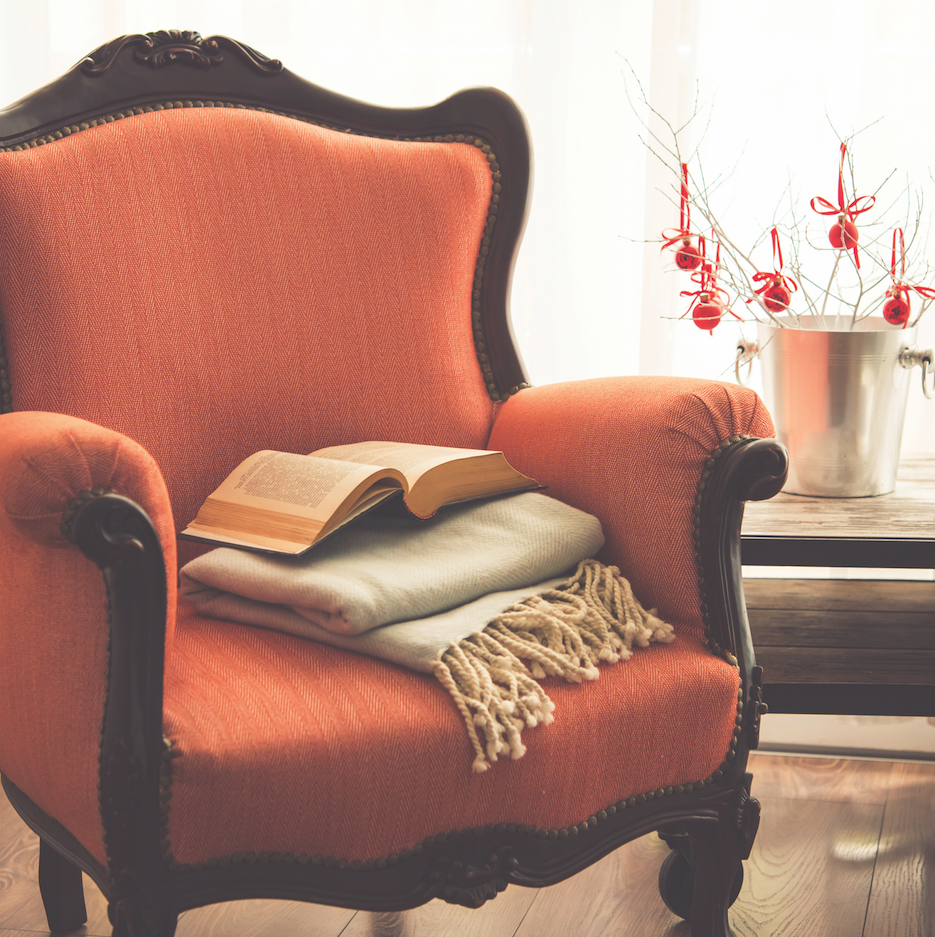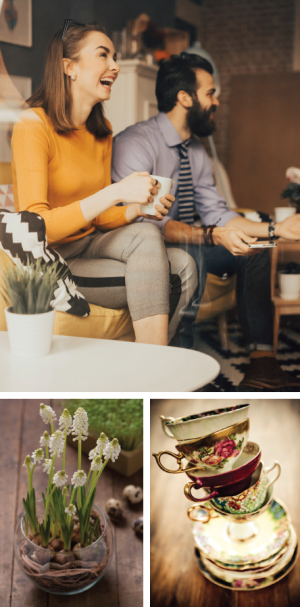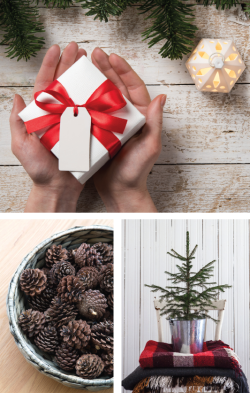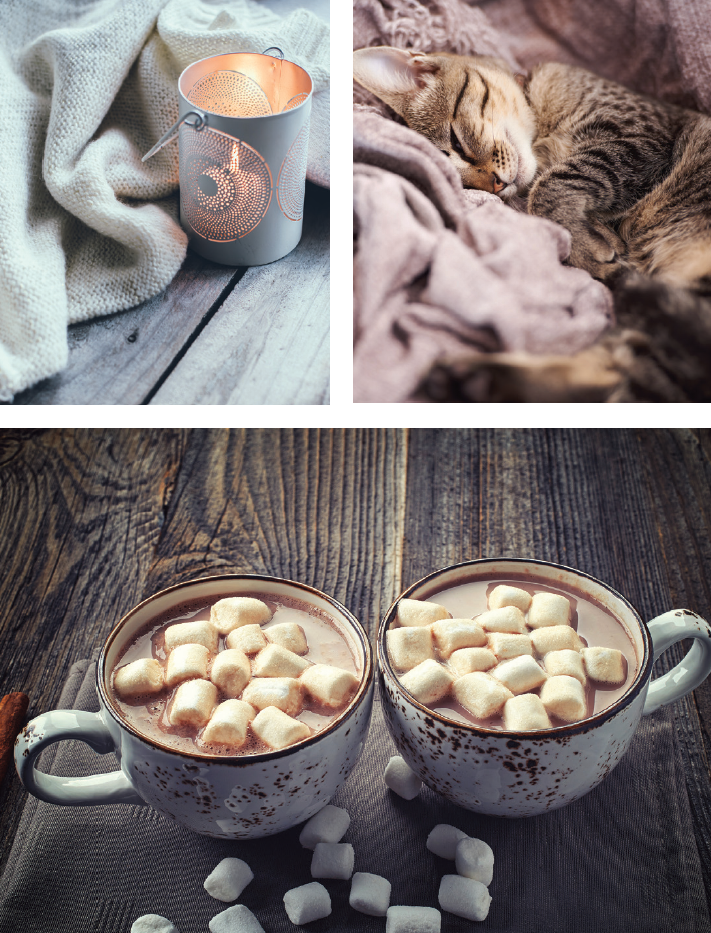Happiness, Scandinavian Style


Last winter, I began hearing a lot about the Danish concept of “hygge.” It has no exact English translation, but roughly correlates to creating a cozy feeling, and recognizing the joy of a simple moment. More recently, the Swedish philosophy of “lagom”—referring to the practice of moderation and having “just the right amount”—has been making the rounds.
These concepts, which are well-understood in their respective nations, have more of an aspirational feeling here in the States. Our curiosity is piqued by the fact that Scandinavian countries such as Denmark and Sweden consistently top global happiness charts, despite those long, chilly winters. So how can we put a little bit of these practices into our daily lives? Read on for some ways to embrace winter contentment in the season ahead.
 Hygge
Hygge
Hygge peaked my interest last year because I was in the middle of reworking my office and looking for ways to improve my work space on a small budget. Pronounced “HUE-ga” or “WHO-ga,” from a centuries-old Scandinavian word that gives us the word “hug”, hygge is about creating contentment through mindfulness and simple pleasures. It’s not something you do so much as something you feel, and while you can certainly practice hygge alone, in traditional Scandinavian communal manner, it’s considered even better when done with friends.
A philosophy for creating sanctuary in a busy world, hygge doesn’t have to cost money… though of course if your idea of cozy is a cashmere robe in a mountain chalet, then it might! But you can create hygge this winter in simple ways. A cup of tea in your grandmother’s bone china teacup and saucer. A soft sweater, warm socks, or a cozy throw on a rainy day. A scented candle or a pot of seasonal flowers (like amaryllis or paperwhites) for a sensory lift. A crackling fire serves up plenty of winter hygge—for a quiet afternoon read, an evening by the fire with friends, or an anytime s’more session! Enjoy a home-cooked meal with friends—a hearty stew or nourishing soup with crusty bread and lively company is all that’s required to banish the winter blues.
I brought hygge into my office by creating a cozy corner with a few repurposed objects to add a little shine, and a gift from a friend, a deliciously-scented hand cream that’s packaged in a paint tube-style container. The act of unscrewing the little cap, squeezing out a creamy dollop, and rubbing it into dry winter skin is a soothing moment in a busy day. My hygge-inspired set up cost very little, but always provides a lift.
Lagom
If hygge is an evening bubblebath, lagom is a morning shower before work. It’s the notion of doing what is essential and letting go of the superfluous. Lagom is a philosophy from the Swedes meaning “just enough,” and there’s a famous Swedish proverb, “Lagom är bäst,” which means, “The right amount is best.” While the virtue of moderation is hardly a new concept, lagom encompasses a wider social philosophy that extends to modesty, teamwork, and even sustainability.
 Though on occasion Swedes have grumbled about the constraints of lagom, it’s a useful survival tool during this time of year. During the holiday and post-holiday season, it can bring a welcome sense of balance, the antidote to consumerism and excess. It’s the game plan for those of us who manage to get through the holidays without gaining seven pounds, and the thing to remember at the gym on January 1st for those of us who didn’t!
Though on occasion Swedes have grumbled about the constraints of lagom, it’s a useful survival tool during this time of year. During the holiday and post-holiday season, it can bring a welcome sense of balance, the antidote to consumerism and excess. It’s the game plan for those of us who manage to get through the holidays without gaining seven pounds, and the thing to remember at the gym on January 1st for those of us who didn’t!
You can practice lagom at the holiday party by having a glass of wine, then refilling your glass with seltzer or club soda. Have a taste of every delicious item at the big dinner, but don’t go back for seconds. (If you can’t resist, balance it out with a light menu the following day.) While it’s hard to resist the “wow” factor of a giant pile of presents, perhaps there’s someone on your list who would treasure a small gift with meaning, or the gift of time with you. If you’re feeling pressured to go all out with decorations, an eight course meal, and general fanfare, give yourself permission to do “just enough” to get into the spirit of the season.
Lagom should also apply to our annual post-holiday atonement. Don’t try and undo a month of revelry during two hours at the gym—slow and steady wins the race. “Dry January,” the recent trend of foregoing alcohol for a month, is a fine goal, but a beer with friends one Saturday evening doesn’t mean all is lost. Lagom isn’t about deprivation; it’s about having one or two pieces of chocolate instead of the whole box.

Winterruhe
There is a German term which doesn’t seem to have begun any trends yet but is also worth mentioning. “Winterruhe,” (pronounced “vinter-roo-uh”) means “winter rest”, and is the natural phase of quietness which many plants and animals experience during the cold season. It’s not the deep sleep of hibernation; rather, winterruhe is a time of decreased activity that serves both to conserve energy and resources during cold months, and also to rest in preparation for the busy season to come.
For many of us, the low ebb of winter energy is something we vaguely feel that we ought to resist. After the sparkle of the holidays, it’s time for skiing, ice skating, hosting football and fondue parties, indoor projects, and maybe some warm-weather travel—all wonderful ways to embrace the season, but don’t forget to nourish yourself and set everything aside on occasion.
In the days before electricity, winter evenings were long and dark, and winterruhe came as naturally to humans as to creatures of the forest. Today it can be tough to let the world go by, but remember that rest is as important to your health and happiness as diet and exercise. Take a morning off from errands and responsibilities and sleep in. Turn off all the modern devices and head to bed early. Enjoy an afternoon nap. Time taken now will restore depleted reserves for later.
Try incorporating these philosophies into your winter, and you might find yourself savoring the season instead of enduring it. If Nordic countries can find contentment in the cold, with a few mindful techniques, now need not be the winter of our discontent.
Cozy, Current Issue, Happiness, Hygge, Moderation, Scandinavian, Simple






